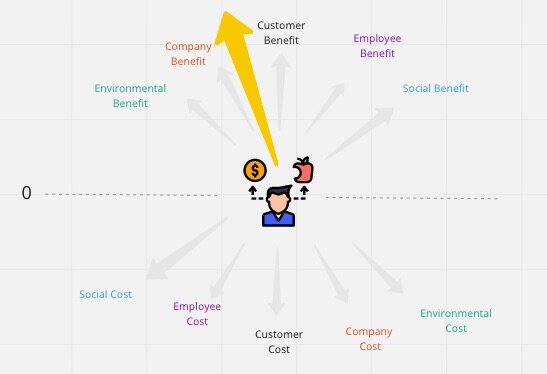Incrative and Iteramental
Recently I discovered a significant difference in my understanding of a phrase used daily in my community - iterative and incremental. Words have always interested me and I believe their specific use to be important in communicating ideas. So this revelation of my apparent misunderstanding was quite a shock to the system.
The word ‘iterative’ is a late 15th century term derived from the latin ‘iterare’ which means ‘to repeat’. The word ‘incremental’ is an 18th century term that comes from the latin ‘incresere‘ meaning ‘to grow’. So I have always used the phrase ‘iterative and incremental’ to mean that we grow value upon the completion of each iteration of work.
There have been several instances over the years where I have heard either a colleague or a client speak about the difference between iterative and incremental where I had just assumed they had mixed up their terms during the conversation … and had brushed it off. I was a fool to do that.
I’ve used Jeff Patton’s EXCELLENT graphic many times before, but recently I found myself reviewing his original blog post describing the difference between iterative and incremental - https://www.jpattonassociates.com/dont_know_what_i_want/
In that post, Jeff describes needing to work both iteratively and incrementally and uses the top graphic as an example of incremental and the bottom graphic as example of iterative. Suddenly my world was topsy turvy. In my world, both are iterative but only the bottom is iterative AND incremental.
Remember, iterative is about repeating. So both involve iteration. But incremental is about growing … and in our case growing value. ASSUMING that the value in the example resides in the visualization of a woman in a pastoral setting, the bottom row represents value (and potential learning) at each iteration.
Further, in that post Jeff describes paint-by-numbers as being another example of ‘incremental’. For me, paint-by-numbers is akin to building horizontal layers of software rather than vertical slices of value. The increments are in work, not value.
This got me thinking that it’s not enough to say that we iterate and increment. It matters WHAT we iterate on and WHAT we increment. Agile teams (and certainly Scrum teams) need to create an increment of a valuable product each iteration. This is what allows the team to regularly learn, through valid feedback, whether they are solving user problems in a valuable way.
Note that in both the top Mona Lisa graphic and the notion of paint-by-numbers, there is no ambiguity in what we are building - no learning to be done. Leonardo’s thought bubble shows a clear picture of what’s to come. So in those cases, we only need to iterate on the WORK, not the value. There is often no value until all the pre-determined work is complete. In the bottom Mona Lisa graphic, where Leonardo has only an idea, there is value in each iteration … both for the viewer and for the artist. Each of these iterations COULD be sold.
Perhaps another way to look at Jeff’s graphic is to interpret the top row as iterative and incremental work … where no learning needs to transpire because there is NO ambiguity in what we are producing. The bottom row is iterative and incremental value, where learning in context is accrued by creating increments of value.
On the other hand, perhaps I have completely missed the point. That’s happened many times before and will again. What do YOU think?












